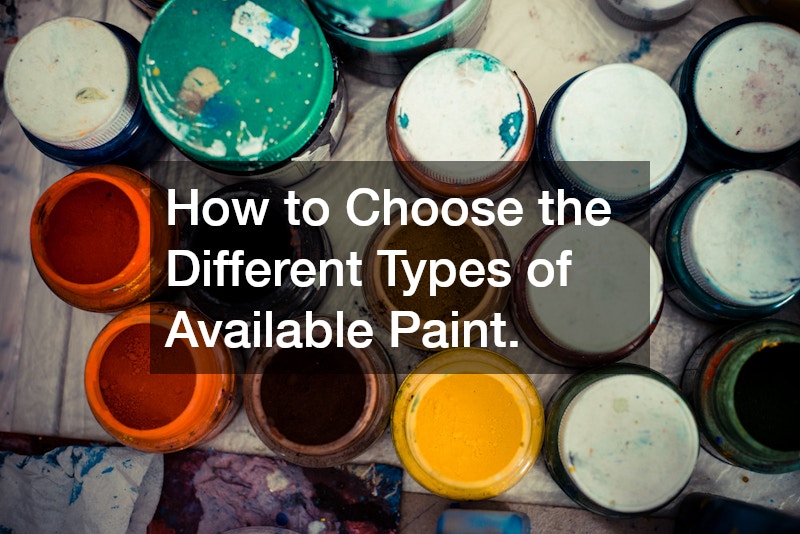Choosing the right paint for your project is crucial to achieving the desired finish and longevity. Different types of paint serve different purposes, and it’s essential to understand their characteristics. The most common types include water-based (latex), oil-based, and specialty paints, each having various applications and advantages.
Water-based paints, also known as latex, are popular for their ease of use and environmental friendliness. They dry quickly, emit fewer volatile organic compounds (VOCs), and are easy to clean with soap and water.
These paints are ideal for most interior walls and ceilings, offering a smooth and even finish with excellent color retention.
Oil-based paints, on the other hand, provide a durable and hard finish, making them suitable for high-traffic areas and surfaces exposed to harsh conditions. They take longer to dry and require mineral spirits or turpentine for cleaning. Oil-based paints are typically used for trim, doors, and outdoor projects due to their robust nature and resistance to wear and tear.
Evaluating the Finish Options
The finish of paint refers to the sheen or gloss level, which affects both the appearance and function of painted surfaces. The main categories include flat, eggshell, satin, semi-gloss, and gloss. Each finish has specific advantages and limitations, influencing the overall look and durability of the paint job.
Flat or matte finishes are excellent at hiding surface imperfections, making them ideal for ceilings and walls in low-traffic areas. They offer a non-reflective, smooth look but are less washable, which can be a drawback for homes with children or high activity levels. These finishes are perfect for living spaces where a calm, sophisticated ambiance is desired.
Eggshell and satin finishes strike a balance between durability and aesthetics, providing a slight sheen that adds elegance without being overly glossy. These are preferred for living rooms, kitchens, and bathrooms, where a bit more durability and resistance to moisture are necessary. They are easier to clean than flat paints, making them practical for busy households.
Considering Quality and Coverage
When selecting paint, ensuring the quality and coverage is essential for a successful project. High-quality paints typically offer better coverage, color retention, and durability, though they may come at a higher initial cost. Understanding the importance of coverage can save time and money in the long run.
Good quality paints require fewer coats to achieve full coverage, reducing the effort and materials needed for the job. Investing in high-quality options may seem expensive initially but can prevent the need for frequent touch-ups or repaints. It is often more cost-effective to pay a little more upfront for a better product.
Manufacturers typically provide coverage estimates on paint cans, which indicate the average area a single gallon will cover. It’s crucial to estimate the required amount accurately to avoid running short or over-purchasing, ensuring efficiency and consistency in your painting project. With proper planning and high-quality paint, achieving professional-looking results becomes more attainable for any homeowner.
Exploring Specialty Paints
In addition to the standard paint types, specialty paints offer innovative solutions tailored for specific applications and environments. These include paints designed for mold resistance, heat resistance, and chalkboard applications, among others. Specialty paints are ideal for unique needs or to achieve specific effects that standard paints cannot provide.
Mold-resistant paints are formulated for high-moisture areas like bathrooms and basements, where mold growth is a common concern. They contain antimicrobial agents that prevent mold proliferation, ensuring a safer and cleaner environment. Heat-resistant paints are suitable for surfaces exposed to extreme temperatures, such as fireplaces and radiators, providing both protection and an aesthetic finish.
Chalkboard paint is a popular choice for creating writable surfaces in classrooms, kitchens, or children’s rooms. It allows any wall to be transformed into a functional and interactive space, encouraging creativity and communication. These specialty paints open up a world of possibilities for customization and functionality within home and commercial spaces.
Final Tips for Choosing the Right Paint
To ensure a successful painting project, consider not only the type and finish of paint but also the conditions in which it will be applied. Take into account factors like light exposure, room use, and desired durability when making your decision. Proper preparation and application techniques are equally crucial for achieving the desired results.
Before purchasing, test samples of the selected paints to see how they look in different lighting conditions and match with existing decor. This step helps avoid costly mistakes and determines the best choice for your specific setting. Remember, the appearance of paint can change drastically with lighting and reflection.
Don’t hesitate to consult with professionals or knowledgeable staff at paint supply stores, who can offer valuable insights and recommendations based on your project requirements. Armed with the right information and product selection, you can confidently tackle any painting project, transforming your space with the perfect coat of paint.

